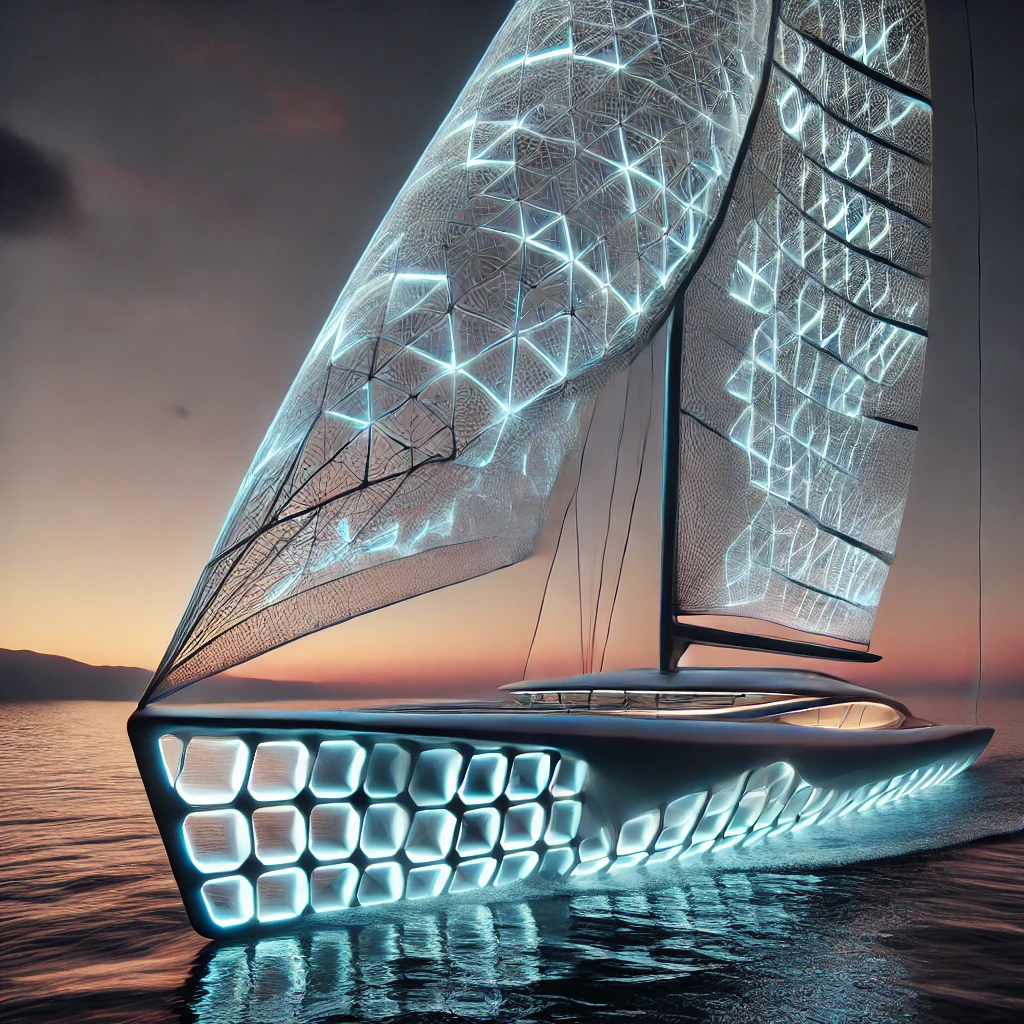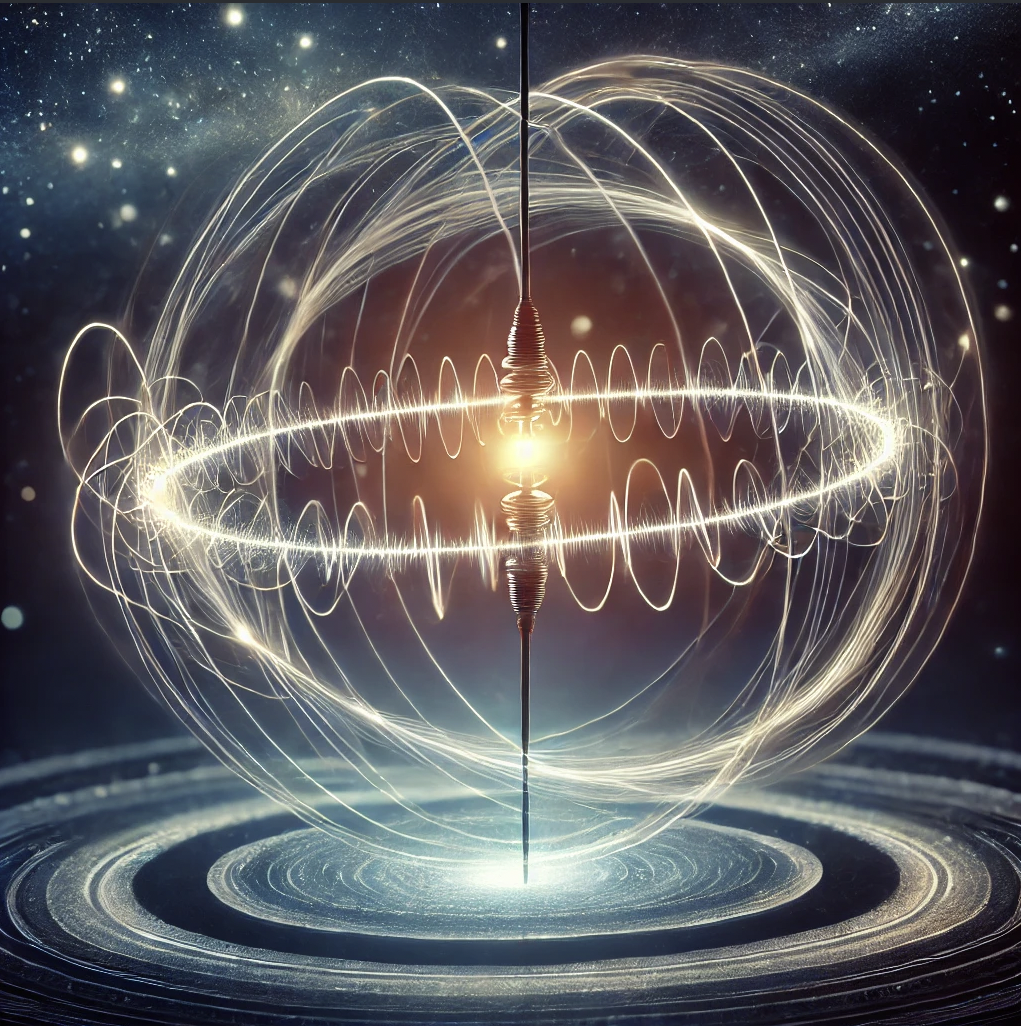Revolutionizing Maritime Engineering
As humanity ventures further into the depths of the oceans and the reaches of space, the tools that drive exploration must evolve.
Enter Chroma Hulls—a breakthrough in maritime and adaptive technology.
These advanced systems transform vessel hulls into dynamic, intelligent interfaces that can adjust, optimize, and thrive in the most demanding environments.
Chroma Hulls operate at the intersection of cutting-edge engineering and sustainable innovation.
Through integrated 3D sensory systems and modular Chroma Hull, vessels now self-maintain, harvest resources, and adapt to shifting environmental demands with unprecedented precision.
At the crossroads of engineering brilliance and sustainable design, Aqua Chroma unveils the future of maritime and energy systems.
Our revolutionary Lap Strake Technology harnesses adaptive materials, computational intelligence, and modular energy systems to redefine what vessels can achieve in the dynamic environments of oceans—and beyond.
Resource Collection and Molecular Scanning: Unlocking Volumetric Riches
Modern vessels equipped with Chroma technology redefine resource collection through the integration of molecular scanning and volumetric analysis.
By leveraging the vessel’s expansive surface area, these systems identify trace resources, isolate valuable compounds, and collect them in bulk—all while in motion.
This transforms vessels into dynamic platforms capable of harvesting the ocean's vast potential.
Chroma Hull form the foundation of this capability, embedding molecular sensors across the vessel’s hull.
These sensors detect the presence of trace elements, organic compounds, and energy-dense particles within the surrounding environment.
Advanced 3D processors analyze the data in real time, creating a spacial map of resource distribution around the vessel.
This map allows for precise targeting of resource-rich zones, optimizing collection efficiency.
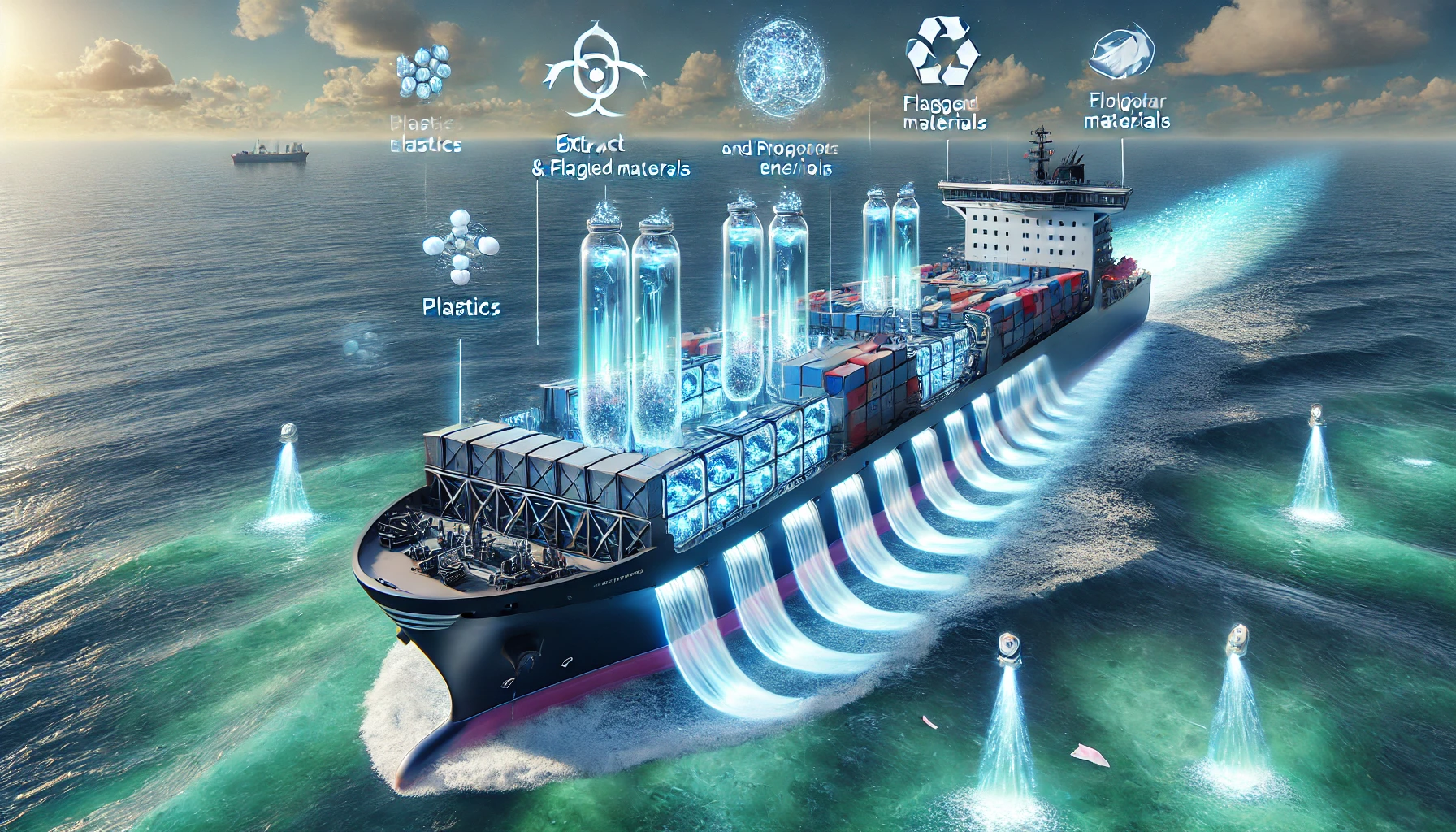
The vessel’s surface area becomes an active harvesting mechanism.
By utilizing adaptive energy modulation, Chroma Hull create micro-attraction fields that draw specific particles toward the hull.
For example, trace minerals dissolved in seawater can be selectively captured and directed to collection chambers.
Organic compounds, such as plankton or algae, are gently funneled into onboard processing units, ensuring their viability for industrial or ecological applications.
A key innovation lies in the vessel’s ability to refine resources at the point of collection.
Molecular scanning systems identify the chemical composition of captured materials, allowing onboard processors to sort and separate them into usable categories.
Energy-dense compounds are routed to power generation systems, while rare elements are stored for industrial use.
This process minimizes waste and maximizes the utility of every collected particle.
Chroma-enabled vessels also enhance sustainability by actively monitoring and adjusting their impact on the environment.
Sensors continuously assess salinity, temperature, and nutrient levels, ensuring that collection activities do not disrupt local ecosystems.
Excess energy generated by the vessel is redirected to support marine life, such as by creating nutrient plumes that foster biodiversity in resource-depleted areas.
The scalability of this technology makes it suitable for a wide range of applications.
Small vessels can focus on localized resource collection, supporting aquaculture and small-scale industries.
Larger vessels, acting as mobile resource hubs, can operate in open waters to harvest bulk materials or assist in global energy redistribution networks.
This flexibility ensures that Chroma technology meets the diverse needs of the maritime industry while advancing sustainability goals.
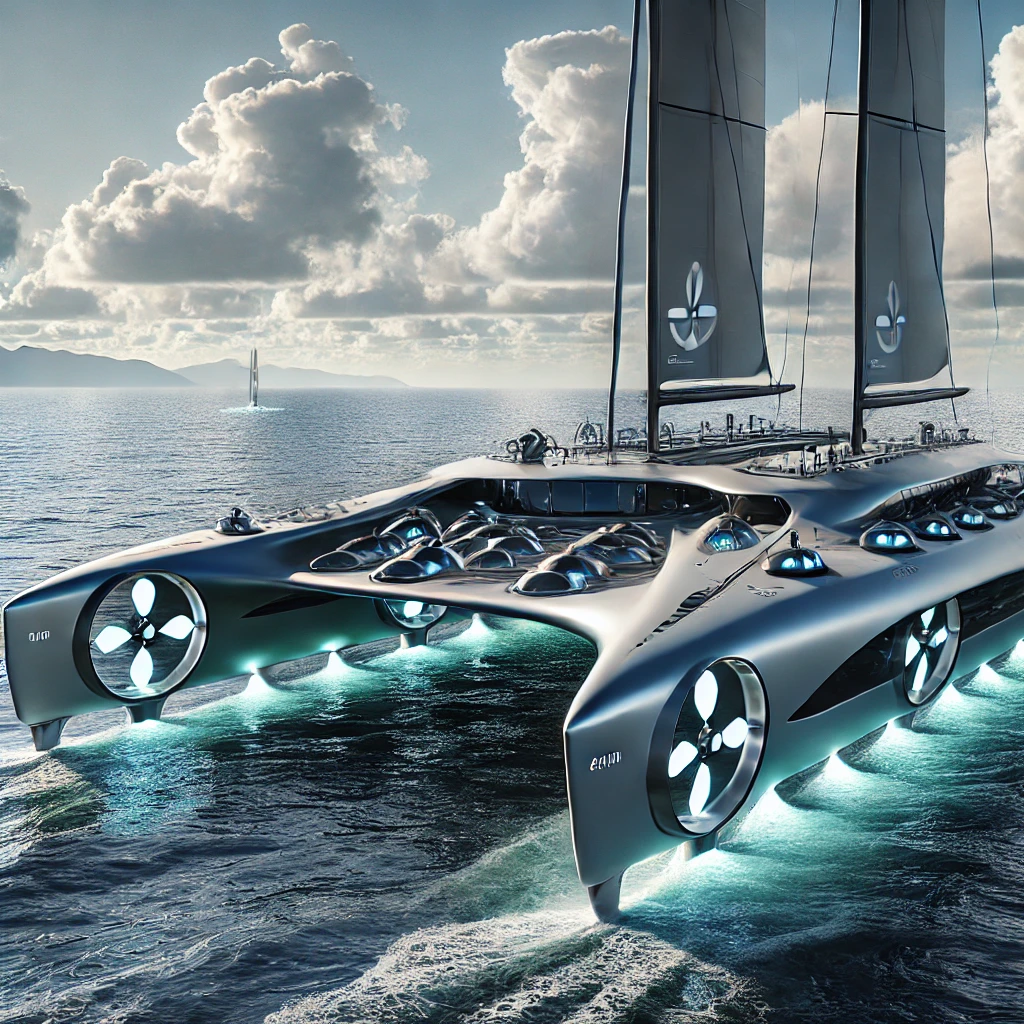
The integration of resource collection and molecular scanning systems also positions vessels as critical nodes in a global resource management network.
Data collected by individual vessels is shared across networks, contributing to a comprehensive understanding of resource availability and environmental conditions.
This interconnected approach enables industries to optimize supply chains, reduce waste, and support global sustainability initiatives.
By transforming the vessel’s hull into an intelligent harvesting surface, Chroma technology unlocks a future where resource collection is not only efficient but also harmonious with the natural world.
From identifying trace elements to collecting bulk resources, these systems ensure that vessels gain the utility they deserve, turning every journey into an opportunity to enrich both industry and the environment.
Biodiverse Lattice Nodes: Nature and Technology in Harmony
The future of Chroma technology lies not only in its advanced engineering but also in its ability to cooperate with the natural world.
By integrating biodiverse lattice nodes into the Chroma system, vessels can nurture ecological balance while benefiting from the ocean’s natural adaptability.
These nodes combine plant and animal life within their design, creating panels that thrive in marine environments and contribute to the vessel’s functionality.
Biodiverse lattice nodes are composed of structures that mimic natural habitats, such as coral reefs or mangrove roots, providing homes for various marine organisms.
These nodes attract and sustain a wide range of plant and animal species, from algae and seagrass to fish and crustaceans.
The cooperative relationship between the lattice and its inhabitants fosters a dynamic ecosystem that continuously adapts to environmental conditions.
For vessels, these nodes serve as adaptive panels that support both structural and operational needs.
The plant life integrated into the lattice enhances water filtration, removing impurities that could affect vessel systems.
Meanwhile, the animals contribute to nutrient cycling, ensuring a healthy environment for the nodes to thrive.
This natural synergy improves the durability and functionality of the panels, reducing maintenance requirements and enhancing the vessel’s sustainability.
The modularity of biodiverse lattice nodes allows them to be tailored to specific environmental conditions.
In nutrient-rich areas, the nodes can prioritize plant growth to maximize water filtration and oxygen production.
In resource-scarce regions, the nodes focus on maintaining biodiversity, supporting the survival of keystone species.
This adaptability ensures that the panels contribute to the health of the local ecosystem while providing tangible benefits to the vessel.
These lattice nodes also offer a unique opportunity for resource collection.
By attracting and nurturing marine life, they create microenvironments that concentrate valuable resources, such as biomass for bioenergy or minerals excreted by organisms.
The Chroma panels are designed to gently harvest these resources without disrupting the ecological balance, ensuring a sustainable and ethical approach to ocean resource management.
Beyond functionality, biodiverse lattice nodes serve as living laboratories, providing insights into marine ecosystems.
Sensors integrated into the panels monitor the health of the organisms and the surrounding environment, generating valuable data for scientific research and conservation efforts.
This information can be shared across networks, contributing to a global understanding of ocean health and enabling industries to make informed decisions about resource use and environmental impact.
The vision for biodiverse lattice nodes extends beyond individual vessels.
These systems can be deployed in stationary installations, creating artificial reefs or floating habitats that support marine biodiversity.
Over time, they could even contribute to large-scale ecological restoration projects, reversing the damage caused by human activity and climate change.
By combining the principles of Chroma technology with the resilience of nature, these nodes offer a pathway to a sustainable future where industry and ecology coexist harmoniously.
Through biodiverse lattice nodes, Chroma technology transforms vessels into stewards of the seas, bridging the gap between technological innovation and ecological responsibility.
By nurturing life while advancing engineering, these systems embody the potential to adapt, thrive, and coexist in a changing world.
Lap Strake Resilience: Lessons from Craftsmanship
Flexible, overlapping planks, or "lap strake" construction, to create vessels capable of enduring rough seas while maintaining speed and maneuverability.
Inspired by this principle, Chroma Lap Strake Hulls apply modular, overlapping energy panels that mirror the structural ingenuity of these ancient designs.
This approach combines flexibility with strength, enabling vessels to adapt dynamically to shifting pressures and environmental conditions.
Chroma Lap Strake Hulls feature a layered system of 3D-printed adaptive panels designed to realign molecular structures in real time.
These panels not only absorb and distribute stress evenly across the hull but also self-adjust to optimize hydrodynamic performance.
Like Viking ships that flexed with the waves, Chroma Hulls use electrodynamic resonance to maintain structural integrity during extreme conditions, from turbulent seas to high-speed maneuvers.
The overlapping nature of the Lap Strake system enhances the vessel’s ability to withstand sudden impacts.
Each modular panel operates semi-independently, distributing energy away from the point of contact and minimizing the risk of structural failure.
This design also facilitates rapid repairs, as damaged panels can be replaced without compromising the vessel's overall integrity.
By incorporating the adaptive principles of Viking craftsmanship into advanced Chroma technology, Lap Strake Hulls achieve a perfect balance of tradition and innovation.
They offer a resilient and versatile solution for modern maritime challenges, from commercial shipping to deep-sea exploration.
Chroma Hulls and Eddy Current Jet Drives: Precision in Directional Energy
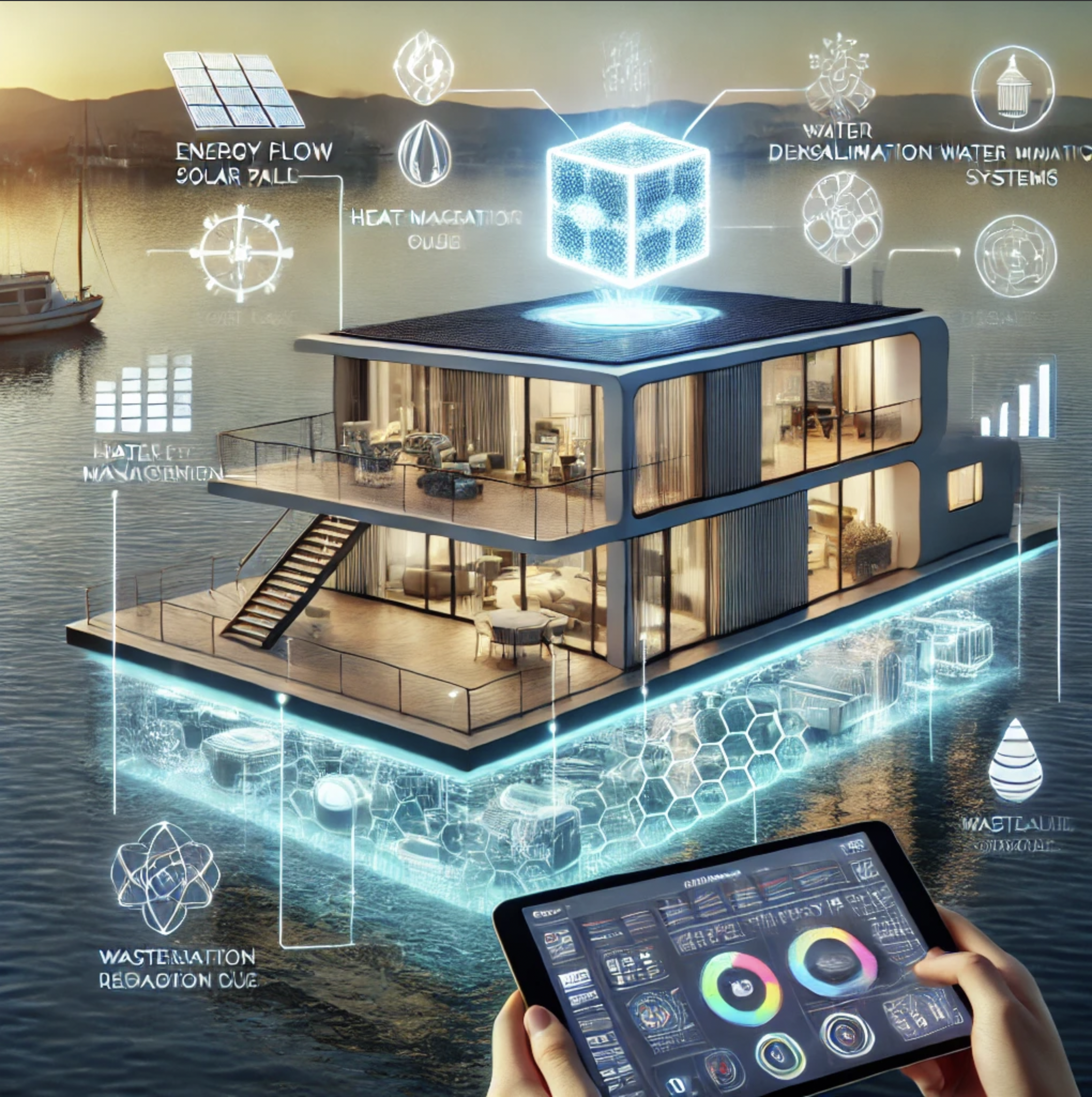
The integration of Chroma Hulls with eddy current jet drives represents a transformative leap in maritime propulsion.
By leveraging directional energy, vessels can achieve unparalleled cohesion in their interaction with water, reducing thermal drag and optimizing energy efficiency.
At the heart of this innovation lies the ability of Chroma Hulls to steer energy flows, creating controlled eddy currents along the vessel's path.
These eddy currents generate a localized jet effect that propels the vessel forward while smoothing water interactions.
This minimizes turbulence and maintains a cohesive water column around the hull, significantly reducing drag caused by chop and wave resistance.
The molecular padding effect is achieved through energy modulation within the hull’s surface.
Chroma Hull distribute directional energy in finely tuned pulses, aligning water molecules along the vessel's trajectory.
This alignment creates a low-friction layer that not only reduces thermal drag but also improves the vessel's overall hydrodynamic performance.
The result is a measurable percentage improvement in propulsion efficiency, especially at higher speeds where drag forces typically escalate.
Eddy current jet drives take this concept further by converting the vessel’s motion into a self-sustaining propulsion cycle.
Water drawn into the system is energized and expelled as high-velocity jets, synchronized with the directional energy outputs of the Chroma Hull.
The combination of jet propulsion and molecular cohesion ensures that every unit of energy is maximally utilized, reducing fuel consumption and extending operational range.
The reduction in thermal drag has additional benefits beyond propulsion efficiency.
By maintaining cooler operating temperatures along the hull, the system minimizes thermal stress and material fatigue, extending the lifespan of the vessel.
This thermal management capability also enhances the performance of onboard systems, which benefit from the consistent temperature regulation provided by the Chroma Hull’s energy distribution.
The adaptability of this system makes it suitable for a wide range of vessel types and applications.
Commercial ships can leverage the technology to reduce fuel costs and environmental impact, while research and exploration vessels gain the ability to operate more efficiently in extreme conditions.
Naval operations, too, stand to benefit from the enhanced speed, stealth, and range provided by this advanced propulsion system.
The integration of eddy current jet drives and Chroma Lap Strake Resourceful Application Range demonstrates the power of combining precision engineering with advanced energy modulation.
By transforming water interaction into a cohesive and controlled process, this technology sets a new standard for maritime efficiency and innovation.
The reduction in drag and thermal dissipation is not just a technological feat—it’s a testament to how science can redefine the boundaries of what vessels can achieve.
Future Vision – Intelligent Vessels and Oceanic Harmony
The innovations enabled by Chroma Hull, 3D processors, and adaptive energy systems redefine what vessels can achieve.
With every advancement, they become more than vessels—they are platforms of a sustainable and interconnected future, where science and engineering converge to unlock infinite potential across oceans, skies, and beyond.
Imagine vessels that:
- Expand into solar sails for space exploration.
- Sink lower into the waterline to enhance buoyancy and energy capture.
- Collaborate with other vessels through a global energy and data-sharing network.
The oceans are as dynamic as they are vast, and the vessels of the future must evolve to not only traverse these waters but to interact with them as adaptive, intelligent systems.
With Chroma technology at the core, these vessels leverage 3D processor arrays, energy routing systems, and molecular scanning to redefine what it means to operate on—or within—the ocean.
These advancements are more than engineering marvels; they are the foundation for a future where vessels dynamically adjust their depth, height, and energy use to harmonize with their environment.
Through depth modulation, vessels equipped with Chroma Hull gain the ability to position themselves at precise layers of the ocean for optimal efficiency.
3D processors actively monitor buoyancy by distributing energy through the hull, allowing vessels to rise or sink dynamically.
This depth flexibility enables vessels to adapt to thermal gradients, positioning themselves within temperature zones that maximize energy efficiency or support operational needs.
Molecular scanning complements this capability by identifying nutrient-rich layers, enabling vessels to selectively harvest organic compounds or other resources directly from the water.
Simultaneously, the ability to expand height introduces a new dimension of maritime adaptability.
Deployable mylar sheets and solar arrays can unfurl to harness sunlight during optimal conditions, turning vessels into mobile solar farms.
These systems retract during storms or high winds, protecting both the technology and the vessel’s structural integrity.
The height adjustments also enhance communication, ensuring clarity in navigation and data exchange by raising signal arrays above interference zones.
As vessels begin to embody these flexible capabilities, they transcend traditional roles and become platforms for resource integration.
Acting as mobile feeding stations, vessels create dynamic aquaculture hubs, using nutrient collection systems to distribute feed in precise locations.
These stations support free-ranging fish populations while minimizing waste and promoting sustainable fisheries.
Onboard systems also isolate and refine trace elements from seawater, enabling vessels to capture energy-dense resources while actively contributing to the preservation of marine ecosystems.
The modular design of Chroma layers transforms the vessel’s hull into an active, self-maintaining system.
Layers of adaptive materials respond to environmental changes, ensuring long-term durability while integrating seamlessly with onboard systems for energy harvesting and distribution.
These design layers create an ecosystem where each component is interconnected, amplifying the vessel’s efficiency and adaptability.
Whether using magnetic potentials to smooth metal substrates or leveraging molecular scans to adjust hull composition, these vessels continuously refine their operations, blending innovation with sustainability.
This flexibility extends beyond the ocean’s surface, presenting a vision where vessels act as both oceanic harvesting networks and precursors to space-ready technology.
By forming distributed grids across the oceans, vessels share data and energy, creating a global maritime network that redefines resource management.
Deployable energy systems, such as solar sails, demonstrate direct applications for extraterrestrial operations, bridging the gap between the seas and the stars.
From enhanced stealth in naval operations to real-time ecosystem monitoring in research missions, the implications of these intelligent systems span industries and disciplines.
Commercial shipping benefits from reduced fuel consumption and operational costs, while environmental researchers gain tools to preserve and support marine life.
These vessels become more than a mode of transportation—they evolve into living systems, actively harmonizing with their surroundings while paving the way for a sustainable future.
Through intelligent design and modular adaptability, Chroma-equipped vessels offer unparalleled opportunities to reimagine maritime operations.
With every advancement, they move closer to a reality where the oceans are not merely traversed but understood, nurtured, and harmonized.
In this convergence of science, engineering, and sustainability, vessels unlock infinite potential—charting a course that unites oceans, skies, and beyond.
Twenty Thousand Leauges Leagues Under The Sea
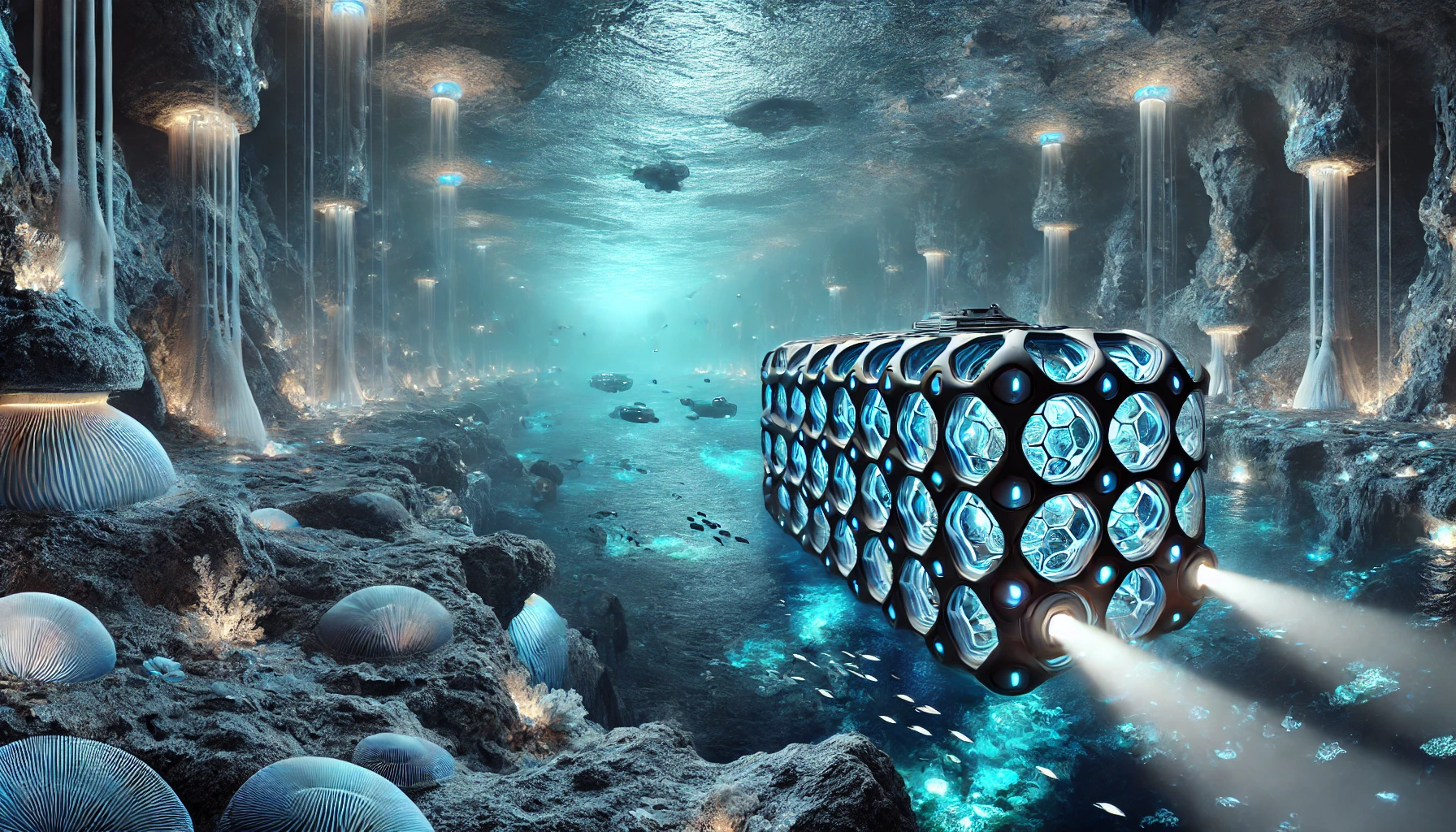
The oceans, vast and enigmatic, are not just the cradle of life but the blueprint for humanity’s future in adapting to diverse environments.
Just as Captain Nemo’s Nautilus navigated the mysteries of Jules Verne’s undersea worlds, modern Chroma technology equips humanity with tools to thrive in conditions that were once considered impossible.
Whether venturing beneath ocean depths, into subterranean mines, or even off-planet, the principles of adaptation, energy management, and computational insight unlock a future of boundless potential.
Chroma-equipped vessels, with their adaptive lattices and dynamic energy systems, become platforms of transformation, able to modulate their structure and function based on their surroundings.
Imagine a vessel sinking into a nutrient-rich ocean trench, its molecular scanners analyzing fluid compositions while onboard 3D processors dynamically adjust its hull for the pressure and density of the depths.
At the same time, energy harvested from hydrothermal vents powers its systems, making it entirely self-sustaining.
This isn’t merely a technological advancement; it’s a reimagining of how vessels interact with and adapt to their environment.
Such adaptability extends beyond the ocean floor.
Consider a subterranean mining operation, where vessels equipped with fluid analysis systems float in liquid solutions, mapping mineral compositions and harvesting resources with surgical precision.
Chroma Hull provide the computational backbone, analyzing molecular arrangements and distributing energy to create optimal extraction patterns.
These vessels can reconfigure themselves, deploying clamshell-like structures to stabilize within caverns or retracting systems to navigate narrow passages.
The same principles could one day guide humanity’s ventures into extraterrestrial territories, where adapting to new gravitational forces and atmospheres requires the same modular ingenuity.
Size classifications of these vessels would open pathways to even greater exploration.
Smaller vessels, designed for intricate operations, could focus on localized resource collection and environmental analysis, while larger vessels act as mother ships, coordinating fleets and distributing energy.
In oceanic depths, these classifications create networks of interdependent units that function as a cohesive system.
When scaled to extraterrestrial ambitions, these networks could form the foundation of off-world colonies, turning oceans, ice fields, or subsurface aquifers into thriving environments for human and ecological expansion.
The marvel lies in the continuous adaptation to environmental diversity.
Vessels that navigate through the crushing pressure of a deep-sea trench one moment could recalibrate their systems to operate in the thin atmospheres of Martian valleys the next.
Their lattices, intelligent and modular, embody the essence of versatility, proving that humanity’s greatest strength lies in its ability to transform and evolve.
With Chroma technology at the helm, the vision of Twenty Thousand Leauges expands far beyond Earth’s oceans, encompassing the entire cosmos as a canvas for exploration.
The Chroma Lead Balloon – Revolutionizing Nuclear Safety and Energy Utilization

1. Introduction to the Lead Balloon Concept
The Chroma Lead Balloon represents a groundbreaking advance in nuclear technology integration, blending shielding innovation with energy transformation.
Unlike traditional containment methods, which focus solely on isolation, the Lead Balloon operates as an active participant in energy systems.
Designed to incorporate modular Chroma Hull, this lattice framework dynamically adjusts its properties to manage radiation, thermal energy, and mechanical stress.
It is not simply a shield but a computationally empowered layer that interacts with isotopic processes in real-time.
By leveraging advanced materials science and predictive energy modeling, the Lead Balloon establishes a new paradigm in nuclear safety and utility.
Its applications range from energy-efficient maritime systems to portable power nodes for remote locations.
This dynamic system is a cornerstone for redefining nuclear materials not as liabilities but as assets in the energy economy.
The Lead Balloon’s design inherently prioritizes scalability and adaptability, ensuring it remains relevant in evolving technological landscapes.
With the ability to adjust molecular arrangements based on alpha, beta, and gamma radiation profiles, it provides unparalleled flexibility in managing radioactive environments.
In essence, the Lead Balloon is not merely a protective measure but a transformative tool for harnessing isotopic energy.
2. Shielding Through Computational Precision
At the heart of the Lead Balloon is its computational precision, which enables it to respond dynamically to radiation exposure.
Each Chroma block within the lattice is equipped with sensors that detect and analyze radiation intensity, type, and trajectory.
These sensors feed data into a central processor that orchestrates adjustments in the lattice’s molecular alignment.
For example, regions exposed to high-intensity gamma rays may densify their structure to maximize absorption, while areas facing beta radiation can redistribute thermal energy to prevent localized hotspots.
This dynamic shielding capability allows the Lead Balloon to protect both personnel and sensitive equipment with surgical accuracy.
The system’s ability to realign molecular structures extends beyond shielding, enhancing material durability and extending the operational lifespan of the lattice.
Unlike static shielding systems, which degrade over time, the Lead Balloon continuously renews itself, ensuring long-term performance.
This precision transforms the Lead Balloon from a passive barrier into an intelligent, adaptive system that aligns with the principles of sustainable design.
The result is a shielding mechanism that not only protects but also optimizes energy flows, creating a seamless integration of safety and efficiency.
3. Isotopic Energy Harnessing
The Lead Balloon’s utility extends beyond shielding, delving into the active harnessing of isotopic energy.
By integrating with the Isotopic Energy Transition Router (IETR), the system captures and redistributes energy released during isotopic decay.
This process involves routing alpha particles for localized heating, converting beta particles into electrical currents, and utilizing gamma rays for sterilization or material processing.
The Lead Balloon’s lattice acts as a conductor, channeling these energy outputs into systems that maximize their utility.
For example, thermal energy harvested from alpha decay can be used to power onboard heating systems in maritime applications.
Beta energy, known for its potential to generate electrical currents, can drive propulsion systems or recharge batteries.
Gamma energy, with its high penetration ability, can sterilize onboard equipment or process materials for industrial applications.
This comprehensive approach to energy management transforms radioactive byproducts into valuable resources.
The Lead Balloon thus redefines the role of nuclear materials, positioning them as integral components in renewable energy systems.
4. Alpha, Beta, and Gamma Management
A defining feature of the Lead Balloon is its ability to differentiate and manage the unique properties of alpha, beta, and gamma radiation.
Alpha particles, being heavy and relatively low in energy, are absorbed by the outermost layers of the lattice, where they generate localized heat.
Beta particles, with their moderate energy and penetration, are routed deeper into the lattice, where they interact with conductive materials to produce electrical energy.
Gamma rays, with their high energy and penetration, are efficiently absorbed and redirected by specialized lattice regions.
This segregation of radiation types ensures that each form of energy is utilized efficiently while maintaining overall system safety.
The computational models within the IETR continuously optimize this process, recalibrating pathways to balance energy distribution and shielding effectiveness.
This layered approach not only enhances the Lead Balloon’s performance but also enables its application across diverse environments, from nuclear reactors to space exploration platforms.
5. Modularity and Scalability
The modular design of the Lead Balloon allows it to adapt to a wide range of applications and environments.
Each Chroma block within the lattice can be independently calibrated, enabling the system to scale up for large industrial reactors or down for portable power units.
This modularity is particularly valuable in maritime settings, where vessels require adaptable solutions for variable conditions.
For instance, a Lead Balloon integrated into a vessel’s hull can expand its lattice during high-radiation scenarios, providing additional shielding and energy capacity.
Conversely, the system can contract to minimize weight and maximize efficiency during low-radiation operations.
This scalability also facilitates the integration of the Lead Balloon into existing infrastructure, reducing retrofitting costs and accelerating deployment.
The modular nature of the design ensures that the system remains future-proof, capable of integrating advancements in materials science and computational technology as they emerge.
6. Maritime Applications and Energy Networks
In maritime applications, the Lead Balloon transforms vessels into floating energy hubs capable of managing and distributing isotopic energy.
By integrating the Lead Balloon into a vessel’s hull, ships can safely carry and utilize thorium or other nuclear materials as fuel.
This capability is particularly valuable for vessels operating in remote or resource-scarce regions, where traditional fuel supplies are limited.
The Lead Balloon also enables vessels to act as nodes within a global energy network, collecting, storing, and redistributing energy to other ships or coastal facilities.
This interconnected approach enhances the resilience and sustainability of maritime operations, reducing reliance on fossil fuels and minimizing environmental impact.
7. Environmental Considerations
While the Lead Balloon is designed for maximum efficiency, it also prioritizes environmental sustainability.
The lattice’s ability to capture and utilize radioactive byproducts minimizes waste, ensuring that nuclear materials are used to their fullest potential.
Additionally, the system’s computational models monitor environmental conditions, adjusting energy outputs to avoid disruption to local ecosystems.
For example, vessels equipped with Lead Balloons can deploy nutrient plumes to support marine biodiversity, offsetting the environmental impact of their operations.
This dual focus on performance and sustainability positions the Lead Balloon as a model for responsible nuclear energy utilization.
8. Advanced Safety Protocols
Safety is a cornerstone of the Lead Balloon’s design.
The system incorporates multiple layers of redundancy, ensuring that even in the event of a failure, radiation exposure is minimized.
The lattice’s self-healing properties enable it to recover from damage caused by neutron bombardment or structural stress.
Additionally, the IETR continuously monitors radiation levels and adjusts shielding properties in real-time, preventing overexposure.
These safety protocols make the Lead Balloon suitable for high-risk environments, including space exploration and deep-sea operations.
9. Cross-Disciplinary Applications
Beyond maritime and industrial settings, the Lead Balloon has potential applications in fields ranging from healthcare to aerospace.
In healthcare, the system could be used to manage radiation therapy, providing precise shielding and energy routing for targeted treatments.
In aerospace, the Lead Balloon could protect spacecraft from cosmic radiation while harnessing energy for onboard systems.
These cross-disciplinary applications demonstrate the versatility of the Lead Balloon, making it a valuable tool across multiple industries.
10. Future Vision
Looking ahead, the Lead Balloon represents a bridge between current nuclear technologies and future innovations.
By integrating shielding, energy management, and computational precision, it lays the groundwork for a sustainable energy ecosystem.
As advancements in materials science and computational modeling continue, the Lead Balloon will evolve, unlocking new possibilities for nuclear energy.
This vision extends beyond Earth, positioning the Lead Balloon as a cornerstone for humanity’s exploration of the cosmos.
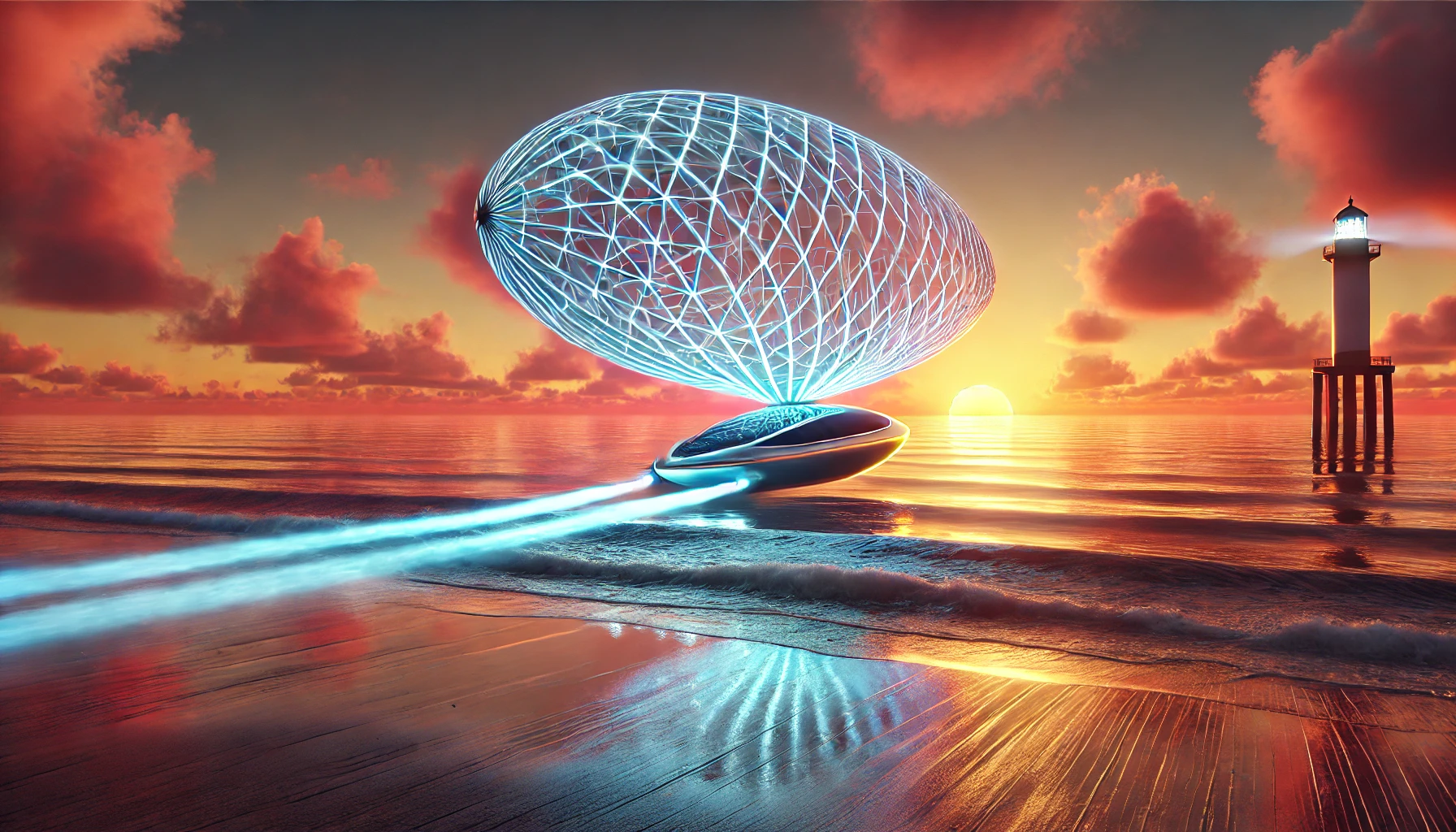
<= Back
<= Home (Splash)
